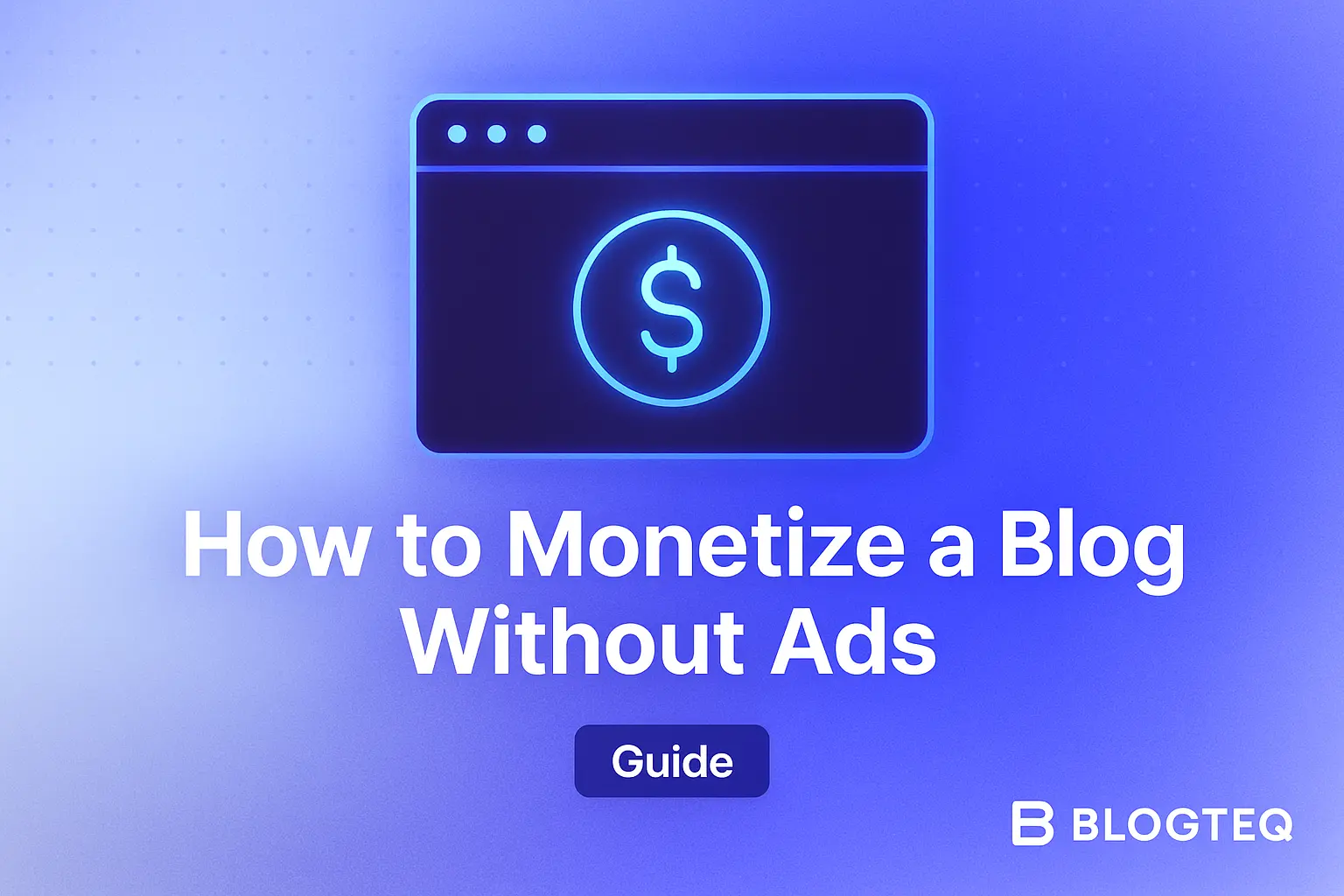How to Monetize a Blog Without Ads
Are you looking to elevate your blog revenue methods in 2025 without relying on ads? This definitive guide unpacks actionable strategies for blog monetization (no ads required), tailored for business professionals seeking to make money from blogs sustainably and strategically.
---
1. Can You Really Monetize a Blog Without Ads?
Absolutely! As the digital landscape evolves, 2025 sees more creators and businesses moving beyond display advertising. Not only can you monetize a blog without ads, but alternative blog revenue methods are often more profitable and help you build deeper relationships with your audience. This guide details several effective ways to make money from your blog—without disrupting the user experience with banners or pop-ups.
---
2. Proven Blog Monetization Methods (No Ads)
Below are high-impact strategies that go beyond traditional advertising, with practical examples and step-by-step instructions.
2.1 Offer Premium Content & Memberships
What: Lock your best content behind a paywall or offer tiered memberships for exclusive resources, insights, or community access.
How to Implement:
- Choose a Platform: Use tools like Memberful, Patreon, or Ghost for easy setup.
- Create Value: Offer in-depth articles, video tutorials, downloadable templates, or private forums.
- Step-by-step:
1. Segment your blog content to identify what can be paywalled.
2. Set membership pricing tiers based on value.
3. Promote memberships through email and CTAs throughout your blog posts.
Example: A professional marketing blog offers a “Pro” tier with weekly competitor breakdowns and access to a private Slack community.
2.2 Launch Digital Products
What: Sell eBooks, online courses, templates, printables, or audio guides relevant to your blog’s niche.
How to Implement:
- Choose a Platform: Gumroad for eBooks and assets; Teachable or Podia for courses.
- Develop High-Value Content: Focus on solutions that address readers’ pain points.
- Step-by-step:
1. Survey your audience or check analytics to determine top interests.
2. Create your product (outline → produce → design).
3. Set up a sales page with testimonials or previews.
Example: A blog for HR professionals offers downloadable onboarding checklists and a comprehensive online course on modern hiring practices.
2.3 Provide Consulting, Coaching, or Freelance Services
What: Monetize your expertise by offering one-on-one consulting or group coaching directly from your blog.
How to Implement:
- Setup Appointments: Use Calendly or Acuity to manage bookings.
- Promote Services: Create a services landing page detailing what clients can expect.
- Step-by-step:
1. List your core services with value-driven descriptions.
2. Add a booking widget and testimonials.
3. Mention your services naturally in relevant blog posts.
Example: A finance blogger offers 60-minute “Ask Me Anything” sessions for small business owners on scaling revenue.
2.4 Affiliate Marketing (Strategic Partnerships)
What: Recommend useful tools or products using tracked affiliate links and earn commissions on qualified sales.
How to Implement:
- Choose Relevant Programs: Apply to affiliate programs in your niche (e.g., SaaS tools for business blogs).
- Maintain Trust: Only promote products you genuinely use or endorse—disclose affiliate relationships to maintain transparency.
- Step-by-step:
1. Integrate affiliate links in reviews, tutorials, or top-10 lists.
2. Monitor performance with dashboards like Impact or ShareASale.
3. Optimize your most trafficked posts with updated links and calls to action.
Example: A productivity blog reviews project management software and links to partner platforms with exclusive trial offers.
2.5 Host Webinars or Workshops
What: Charged online events give attendees access to live trainings, Q&As, or networking.
How to Implement:
- Registration Tools: Use Zoom Webinars, Eventbrite, or Hopin for ticketing and audience management.
- Step-by-step:
1. Plan a focused agenda on a trending topic.
2. Set up a registration page and payment processor.
3. Record and sell access to replays as premium content.
Example: A legal compliance blog holds a paid quarterly seminar for SMBs on new 2025 regulations and best practices.
---
3. Blogging Without Ads: Real-World Case Studies
- Tech Blog: Transitioned from banner ads to a subscription model, doubling monthly income and increasing returning visitors.
- Niche B2B Blog: Introduced exclusive member-only templates and sold 500+ downloads per month.
- Solopreneur Blog: Used affiliate partnerships plus 1:1 coaching sessions to replace previous ad earnings and establish a personal brand.
---
4. Frequently Asked Questions (FAQ)
Q1: Is blog monetization without ads sustainable for the long term?
A: Yes! Many blogs achieve more stable and higher income through product sales, services, and memberships compared to fluctuating ad revenue.
Q2: How do I decide what monetization method fits my blog?
A: Analyze your audience’s needs, their willingness to pay, and what types of content or expertise you can provide uniquely.
Q3: Do these methods require a large audience?
A: Not necessarily. Premium/consulting models often work best with smaller, engaged communities compared to ads that need high traffic.
Q4: Can I combine several of these methods?
A: Yes! Many successful bloggers mix memberships, digital products, affiliate marketing, and consulting for diversification.
---
5. Key Takeaways
- Blog monetization no ads relies on delivering direct value—memberships, products, services, and authentic recommendations (affiliate).
- Start by understanding your audience’s needs and segmenting your offerings.
- Use modern platforms (e.g., Memberful, Gumroad, Calendly) to streamline delivery and payment.
- Consistency, quality, and trust are crucial for blogging without ads in 2025.
- Focus on long-term audience relationships, not just page views.
Ready to monetize your blog in 2025 without relying on ads? Start implementing these proven blog revenue methods today—and transform your blog into a true business asset.
